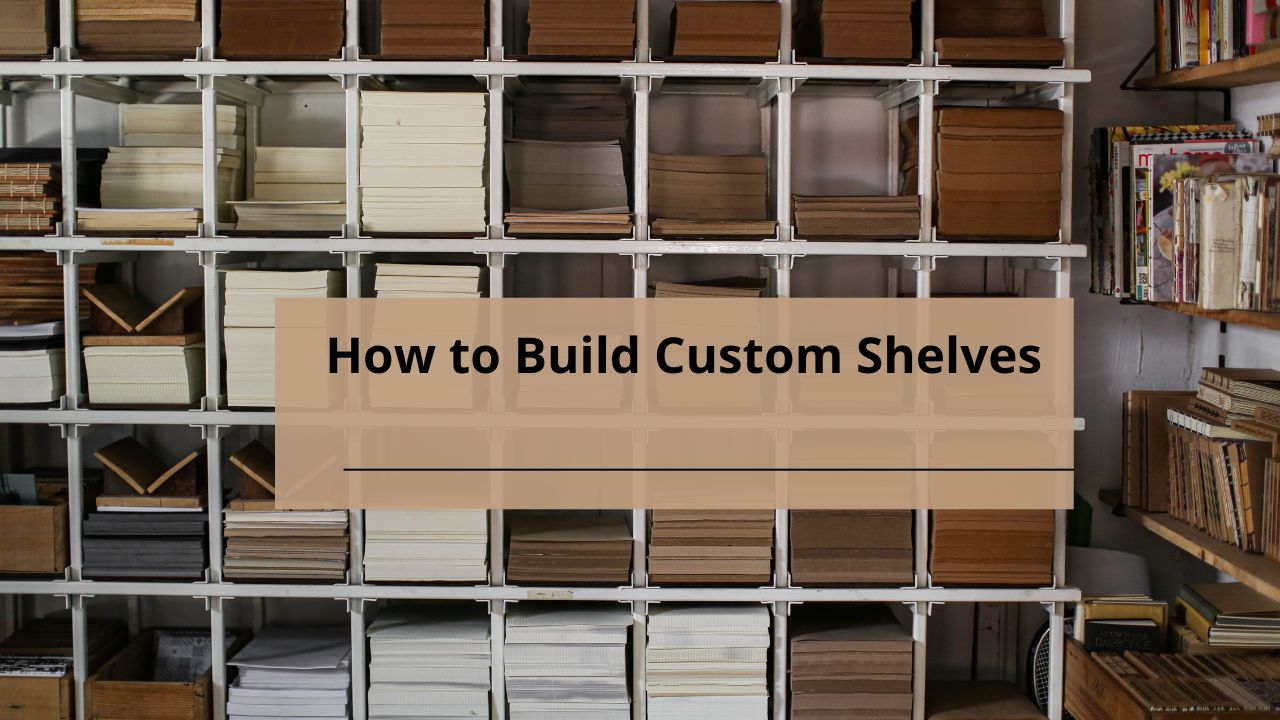Ensuring that shelves are level and secure is crucial for both functionality and aesthetics. Whether you’re installing shelves for storage or display, proper installation will prevent future problems and ensure your shelves hold up over time. In this guide, we’ll walk through the essential steps and tips for achieving perfectly level and secure shelves.
Tools and Materials Needed
Before you begin, gather the necessary tools and materials to ensure a smooth installation.
Measuring Tools
- Tape Measure: For accurate measurements of wall space and shelf placement.
- Pencil: To mark drill points and measurements on the wall.
Mounting Hardware
- Shelf Brackets: Choose brackets that are appropriate for the size and weight of your shelf.
- Screws and Anchors: Ensure they are compatible with your wall type and can support the shelf weight.
Leveling Tools
- Level: To ensure your shelf is straight and properly aligned.
Preparing the Wall
Proper preparation of the wall is essential for a successful shelf installation.
Checking Wall Material
Different wall materials require different installation methods.
- Drywall: Use wall anchors or screws into studs.
- Brick or Concrete: Use masonry anchors and screws.
Locating Studs
Studs provide the necessary support for heavy shelves.
- Stud Finder: Use a stud finder to locate the wooden or metal studs behind the drywall.
- Manual Method: Knock gently on the wall to find solid areas where the studs are located.
Cleaning the Wall Surface
Ensure the wall surface is clean and free of debris.
- Wipe Down: Clean the area where you’ll be mounting the shelf to ensure good adhesion for anchors or screws.
Measuring and Marking
Accurate measurements and markings are key to installing shelves correctly.
Using a Tape Measure
- Measure the Space: Determine where you want the shelves to be placed.
- Mark the Desired Height: Use your tape measure to mark the height for the brackets.
Marking Drill Points
- Align Brackets: Hold the brackets against the wall at the marked height and use a pencil to mark the drill points.
- Double-Check: Ensure all markings are level and correctly spaced.
Double-Checking Measurements
- Verify Placement: Recheck your measurements and marks to avoid errors.
Installing Shelf Brackets
The brackets are crucial for holding up the shelf securely.
Choosing the Right Brackets
- Size and Strength: Ensure brackets are appropriate for the shelf size and weight.
Drilling Holes
- Drill at Marked Points: Use a drill to create holes for the screws or anchors.
- Use the Correct Bit Size: Match the drill bit to the size of the anchors or screws.
Securing Brackets
- Insert Anchors: If using anchors, insert them into the holes before attaching brackets.
- Attach Brackets: Secure the brackets to the wall with screws, ensuring they are tight and stable.
Leveling the Shelf
Ensure the shelf is level for a clean and functional appearance.
Placing the Shelf on Brackets
- Position the Shelf: Place the shelf onto the installed brackets.
Using a Level
- Check Alignment: Place a level on the shelf to ensure it is straight.
- Adjust Brackets if Needed: If the shelf is not level, adjust the brackets accordingly.
Securing the Shelf
A secure shelf will be stable and able to hold the intended load.
Checking Stability
- Test Stability: Gently press down on the shelf to ensure it is firmly in place.
- Adjust if Necessary: Tighten any loose screws or anchors.
Reinforcing with Additional Screws
- Add Extra Screws: For added stability, consider reinforcing with additional screws if needed.
Ensuring Load Capacity
- Check Weight Limits: Ensure the shelf and brackets can support the intended load.
Common Issues and Solutions
Address common problems that may arise during installation.
Uneven Shelves
- Recheck Measurements: Ensure all brackets are at the same height.
- Adjust Brackets: Modify bracket placement if needed.
Loose Brackets
- Tighten Screws: Secure loose brackets with additional tightening.
- Use Anchors: Ensure wall anchors are properly installed.
Shelf Sagging
- Check Brackets: Ensure brackets are properly aligned and not bent.
- Reinforce with Additional Support: Use more brackets or stronger hardware if necessary.
Safety Tips
Follow these tips to ensure a safe and successful installation.
Weight Limits
- Know Your Limits: Do not exceed the weight capacity of your brackets or shelf.
Proper Installation Practices
- Follow Instructions: Adhere to the manufacturer’s instructions for brackets and shelves.
Avoiding Common Mistakes
- Double-Check Everything: Always verify measurements and hardware before finalizing installation.
Conclusion
Ensuring that your shelves are level and secure involves careful preparation, accurate measurements, and proper installation techniques. By following these steps, you can achieve a well-mounted and stable shelf that will enhance your space and serve its purpose effectively.
FAQs
1. How do I know if my wall can support shelves?
Check the wall material and locate studs for support. Use appropriate anchors or screws based on the wall type.
2. What if my brackets are not aligning with the studs?
Use wall anchors designed for drywall or masonry to provide support when studs are not available.
3. How can I fix a sagging shelf?
Check the bracket alignment and reinforce with additional brackets or stronger hardware if necessary.
4. Can I install shelves on drywall without studs?
Yes, but you will need to use drywall anchors designed to hold weight without studs.
5. What tools do I need to ensure a level shelf?
A tape measure, level, drill, and appropriate mounting hardware are essential for a level and secure installation.


